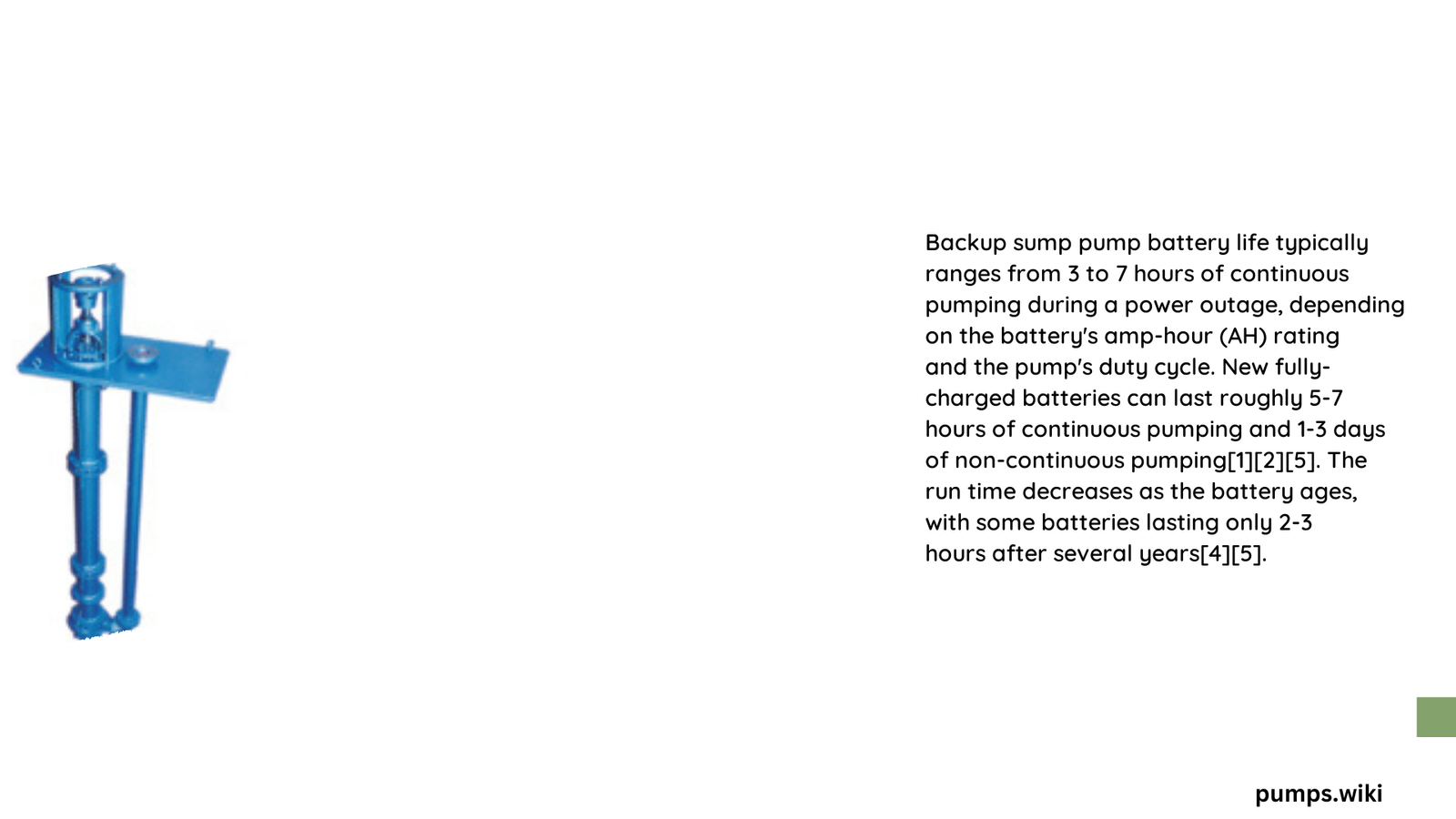Backup sump pump batteries typically last 3-5 years, with runtime varying from 4-7 hours for continuous pumping to 1-3 days for intermittent use. Factors affecting battery life include capacity (measured in Ah), usage frequency, temperature, and maintenance practices. Regular voltage checks, proper charging, and periodic testing are crucial for maximizing battery lifespan and ensuring reliable performance during power outages.
What Factors Influence Back Up Sump Pump Battery Life?
Several key factors determine the lifespan and performance of backup sump pump batteries:
- Battery Capacity: Higher ampere-hour (Ah) ratings generally result in longer battery life.
- Usage Frequency: More frequent use leads to shorter overall lifespan.
- Temperature: Extreme temperatures can negatively impact battery performance and longevity.
- Maintenance: Proper care and regular checks can significantly extend battery life.
Let’s explore these factors in more detail:
Battery Capacity
The capacity of a backup sump pump battery is measured in ampere-hours (Ah). Batteries with higher Ah ratings typically offer longer runtime and overall lifespan. For example:
- 40 Ah battery: Approximately 4 hours of continuous pumping
- 84 Ah battery: Around 7 hours of continuous pumping
Usage Frequency
The more often a backup sump pump battery is used, the shorter its overall lifespan will be. Continuous pumping depletes the battery more rapidly than intermittent use. For instance:
- Continuous pumping: 5-7 hours runtime
- Intermittent pumping: 1-3 days runtime
Temperature
Extreme temperatures can significantly affect battery life and performance. To maximize battery lifespan:
- Store the battery in a dry area
- Avoid exposure to water or excessive humidity
- Maintain a moderate temperature environment
Maintenance
Proper maintenance is crucial for extending battery life. Key practices include:
- Regular voltage checks
- Optimal charging cycles
- Periodic testing of the backup system
How Can You Extend Back Up Sump Pump Battery Life?

To maximize the lifespan of your backup sump pump battery, consider the following maintenance practices:
-
Optimal Charging Cycles: Ensure the battery is fully charged before use. High-quality chargers can help maintain battery health.
-
Regular Voltage Checks: Use a multimeter to check the voltage between positive and negative terminals. If it’s below 12.1 volts, the battery may be aging and require replacement.
-
Maintenance Schedule: Implement a regular inspection routine to check for:
- Signs of corrosion
- Physical damage
-
Proper connections
-
Environmental Control: Keep the battery in a dry, cool place to prevent degradation.
-
Periodic Testing: Simulate power outages to ensure the backup system functions correctly.
What Are the Runtime Specifications for Back Up Sump Pump Batteries?
Runtime specifications vary based on several factors:
| Battery Size (Ah) | Pump Capacity | Estimated Runtime |
|---|---|---|
| 40 Ah | 1/4 HP | ~4 hours continuous |
| 84 Ah | 1/4 HP | ~7 hours continuous |
| 100 Ah | 1/3 HP | ~51 hours (specific duty cycle) |
Note: These are approximate values and may vary based on specific conditions and battery age.
When Should You Replace Your Back Up Sump Pump Battery?
Knowing when to replace your backup sump pump battery is crucial for maintaining a reliable system. Look for these indicators:
-
Voltage Thresholds: If the voltage drops below 12.1 volts, it’s a sign of aging and potential failure.
-
Physical Wear: Check for:
- Corrosion
- Rust
-
Visible damage to the battery casing
-
Decreased Runtime: If the battery’s runtime has significantly decreased (e.g., from 7 hours to 2-3 hours), it’s likely time for replacement.
-
Age: Most batteries need replacement every 3-5 years, depending on usage and maintenance.
What Are the Best Practices for Back Up Sump Pump Battery Maintenance?
To ensure optimal performance and longevity of your backup sump pump battery:
-
Regular Testing: Conduct monthly tests by unplugging the main pump and observing the backup system’s operation.
-
Cleaning: Keep the battery terminals clean and free from corrosion.
-
Water Level: For flooded lead-acid batteries, maintain proper water levels using distilled water.
-
Charging: Use a high-quality, multi-stage charger to maintain optimal charge levels.
-
Documentation: Keep a log of maintenance activities, including dates of voltage checks and any issues observed.
By following these best practices, you can significantly extend the life of your backup sump pump battery and ensure it’s ready when you need it most.
Remember, a well-maintained backup sump pump battery is your last line of defense against basement flooding during power outages. Regular care and attention to your battery’s condition can save you from costly water damage and provide peace of mind during severe weather events.
